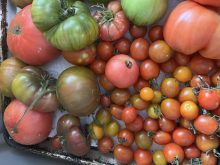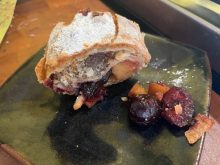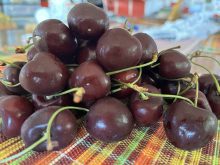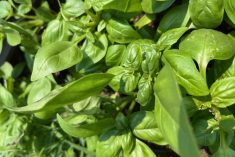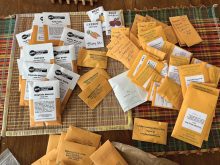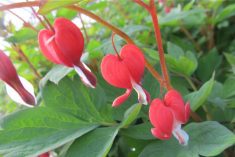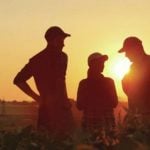Hi folks! It’s Ted here. I’m back again and so glad my gardening companions are tracking right along with me on the Grainews Singing Gardener page. Thanks for coming by this way.
Gardening is an art, a craft and an opportunity to be the student of a lifelong teacher. She shouts out to us, “Learn from me. Grow, produce and preserve as much of your own food as possible for health and healing. Your survival may depend upon it one day.”
There are many choices to write about because there’s no end of topics, from castor bean, cosmos and calendula to tomatoes and potatoes, garlic and gourds, herbs and health, hummingbirds and hollyhock, mosquitoes and music.
Read Also
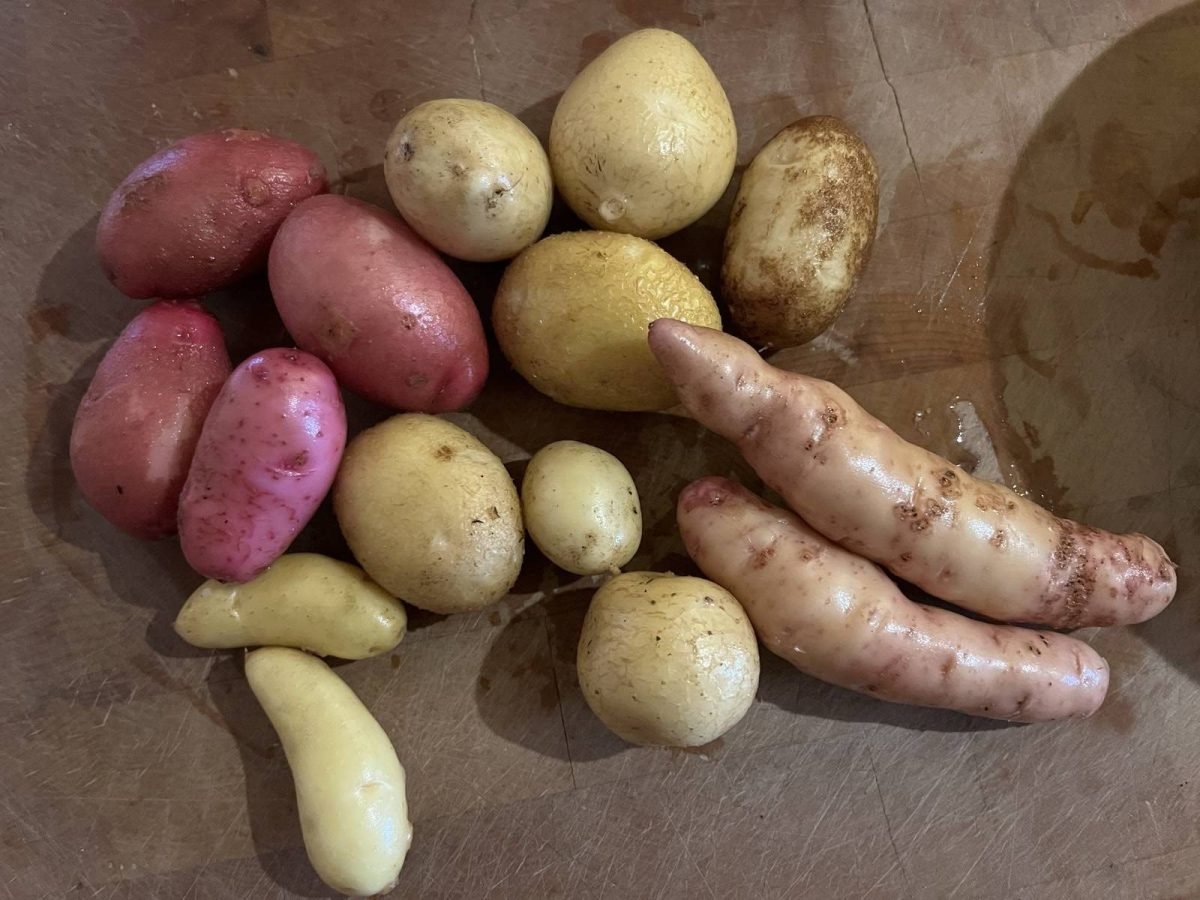
Putting down roots, part 2: Potatoes
Saskatchewan author and chef dee Hobsbawn-Smith offers a retrospective on the potato’s cultural journey from the Americas to Europe and back, and a recipe for butter-basted baby potatoes with rosemary.
When it comes to fruit-bearing trees, there’s a lot to do in the garden and home orchard during April and beyond. I’m devoting this column to the importance of disinfecting garden work tools and the challenges gardeners and fruit growers face from fire blight, especially on apple and pear trees.
I wrote a song that I call “Smiles Are So Contagious,” which I’m dedicating to all Grainews readers who are smiling right now. No question about it, many folks do have wonderful smiles. Just imagine, if we could put them all together, they’d make one massive smile. My flag is unfurled and I’m smiling too. With a tip o’ my hat, I bid all welcome.
Disinfect garden tools
Clean your tools. It’s something you may have heard before, but do you take it seriously?
To do this, you’ll need household bleach or some other cleaning product such as a pine-scented disinfectant. Wear protective gloves when handling.
Mix 1 1/2 cups of bleach and four litres of water. If you’re using a pine-scented disinfectant, 1/2 cup is sufficient, stirred into four litres of water. Store solution in labelled containers, away from children and animals.
Before doing any pruning, dip your tools in the prepared solution and repeat this dipping process before each cut. Clean cuts reduce the likelihood of rot and disease.
Cut larger limbs close to, but not flush with, the trunk. In other words, leave the swollen knob called the collar where the limb meets the trunk. Prune so that outer limbs and side branches grow outward.
Inward growth creates congestion and reduces air circulation, which we don’t want. A small bird should be almost able to easily fly through limbs of a fruit tree that’s kept open through adequate pruning.
To repeat, make sure saws, pruners, loppers, scissors and other garden tools as well as moisture-proof gloves are dipped in disinfectant before moving on to the next cut. Don’t give diseases a chance to invade cuts and wounds.
Subject: Loved your page in Jan. 31 Grainews
Back in March, I heard from Christine and Ken Waddell from Neepawa, Man., a couple who love growing and processing their own apples, raspberries, haskap berries and other fruits.
Christine writes: “I have an apple tree question for you. Prairie Magic apple has been producing extremely well for over 10 years, but I’m concerned about its susceptibility to fire blight. Ken and I have had many yard sites over our 54 years and have always tried to add some fruit production.
“We moved to the present yard site in 2010 and either that year or the next purchased a Prairie Magic apple. We affectionately call it the Drysdale apple as we knew Wilfred and Doris Drysdale quite well and were familiar with his orchard work east of Neepawa on Hwy. 16.”
According to Christine, said tree began bearing a few apples at first and by 2019 they found it difficult to keep up. She described Prairie Magic as a hardy dwarf rootstock tree that’s perfect for smaller yards.

Christine continued, “It is a good keeper. It does not oxidize quickly (turn brown) when cut. We eat them fresh, baked, dried and as home-canned apple pie filling. I make a lot of juice either by centrifuge or pressing and do canning as well.
“Under ideal conditions the apples will keep through until March and in crisper storage until January. From year to year, sweetness of apples and condition vary.
“The tree has a bad-looking wound from August 2019 (see photo at top of page) and I am always concerned about fire blight and don’t know if this damage is a precursor. 2021 was the only poor production year. Some fruit fell before maturity and much of what did mature was marked and wormy. In addition, there was heat, drought and hail.”
Christine concluded with, “Keep on singing and teaching.”
Weather extremes from summer heat and cold in winter can leave cracks and breaks in tree bark, resulting in open wounds or splitting. If you provide some protection around — but not touching — the trunk to deflect heat and cold, this can help.
Some advise painting over wounds and fresh pruned cuts with white latex paint (or another colour that’s more natural with the wood). Others say no to latex and prefer to cover cuts and wounds with shellac.
An almost forgotten treatment involves applying a mixture of fresh cow manure and clay soil to tree cuts and wounds as an aid to healing.

How to deal with fire blight
Fire blight is a serious disease of apple and pear trees. Here are symptoms to watch for. Affected blossoms and leaves wilt and collapse. Apple leaves turn brown and pear leaves turn black. Affected inner bark tissue, when water soaked, turns reddish from its normal white colour. The inner bark of older branches becomes reddish-brown.
Cracks often develop, and an oozing milky substance may appear on the surface of affected bark and turn brown.
This substance is the bacteria responsible for fire blight. It overwinters in live bark at the edge of cankers and oozes out in spring. (Sounds like mud, doesn’t it?) Warm rainfall and insects, especially flies and ants, carry the bacteria to open blossoms.
When infection sets in, it may be evident within a week. It can then rapidly progress into supporting twigs and branches, often accelerated by splashing rain and sucking insects. The bacteria can also make inroads through fresh wounds and succulent young growth.
Other factors contributing to fire blight are poor soil or delays in tissue hardening near the end of summer.
To help prevent fire blight infections, avoid excessive nitrogen applications. When buying apple trees at garden centres, check for the availability of blight-resistant varieties.
You can destroy fire blight bacteria by spraying apple, apple crab and pear trees in the spring before any growth emerges with this solution — three cups of household bleach and a tablespoon of liquid soap stirred into four litres of water.
Generally, healthy apple trees should be pruned every spring before leafing out, so that mostly smaller cuts are required, but if disease is evident, that’s a different story. Nothing is so essential at preventing and fighting fire blight and stopping its progression as making sure all diseased wood is removed from an infected tree. Cut out all diseased wood sections, including up to 12 inches of surrounding healthy wood tissue.




